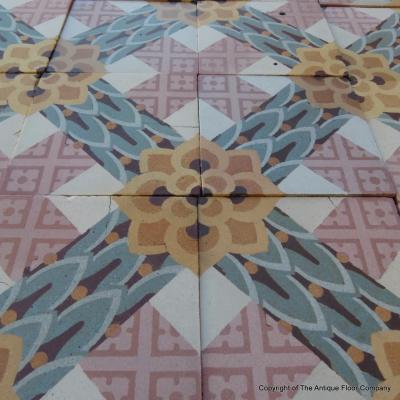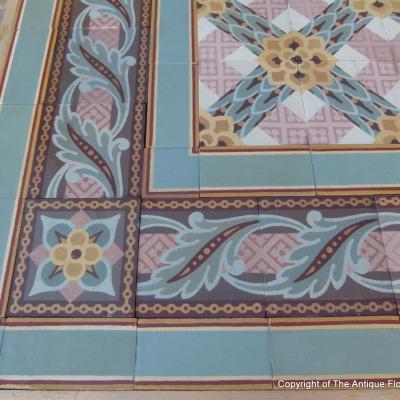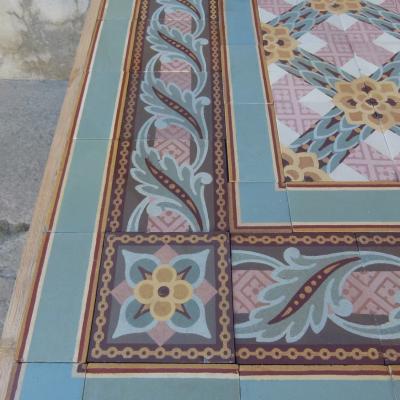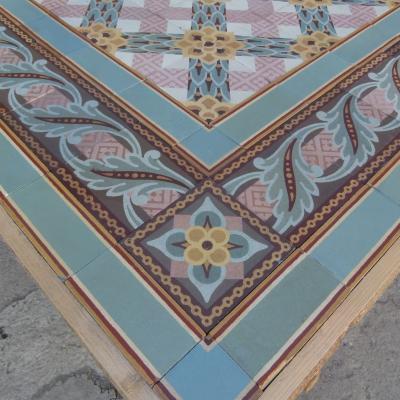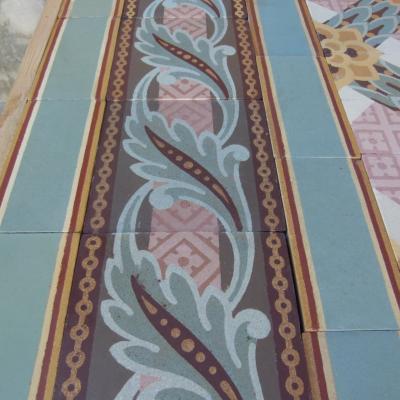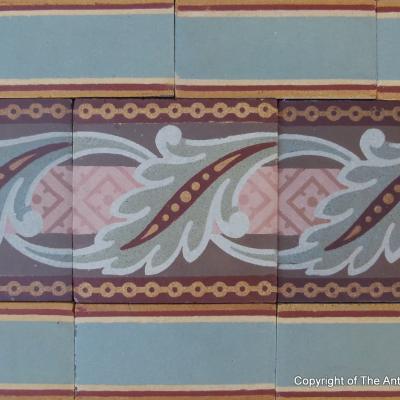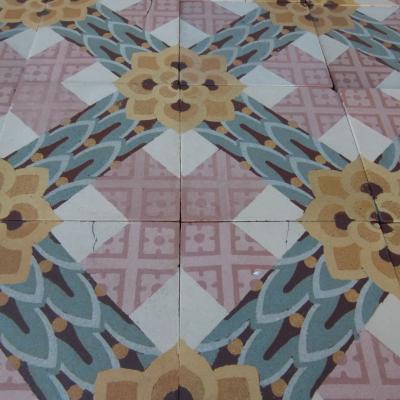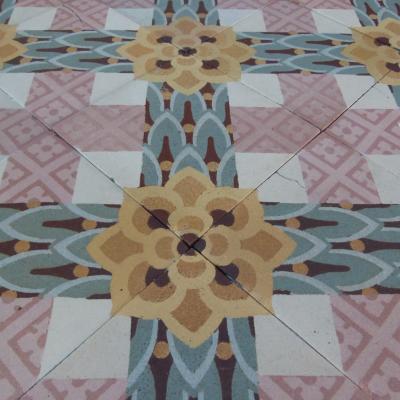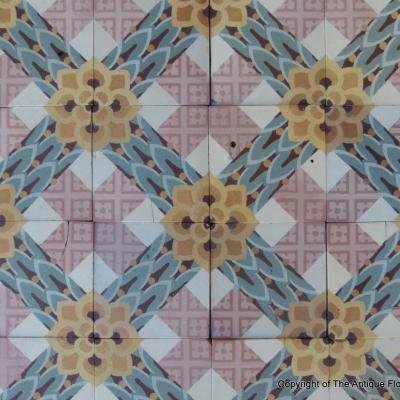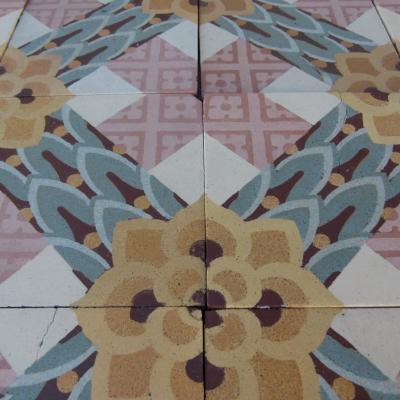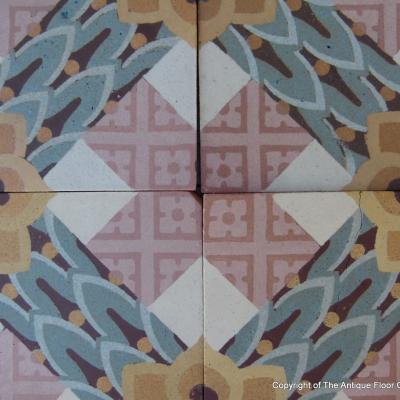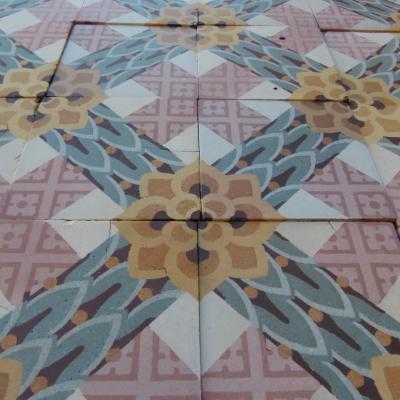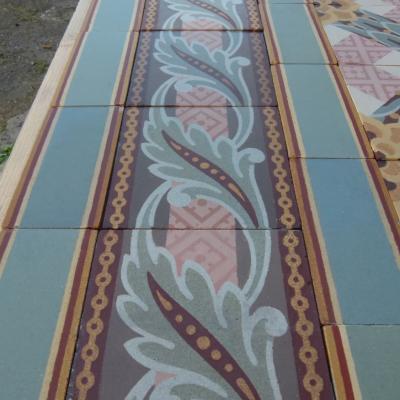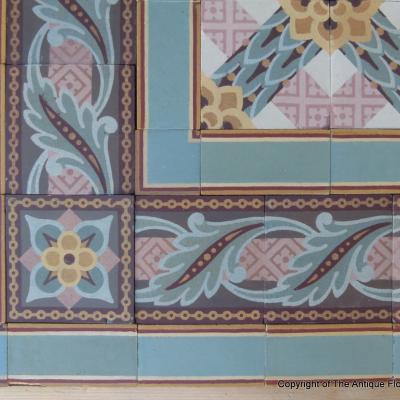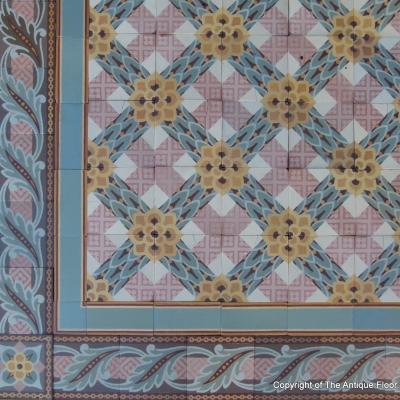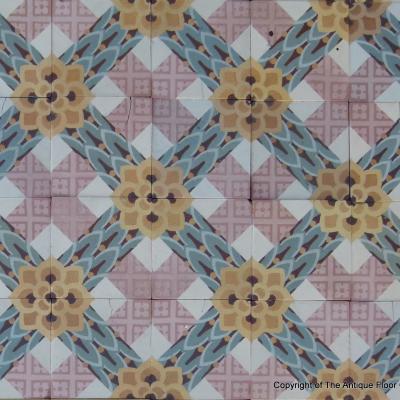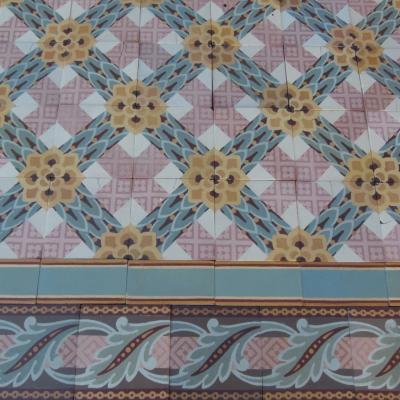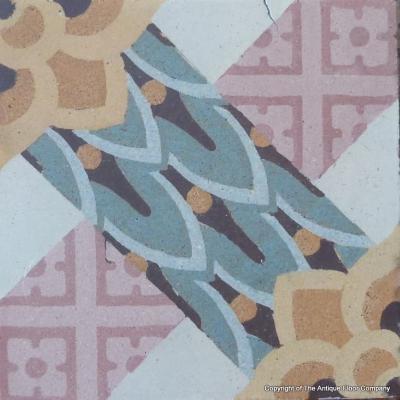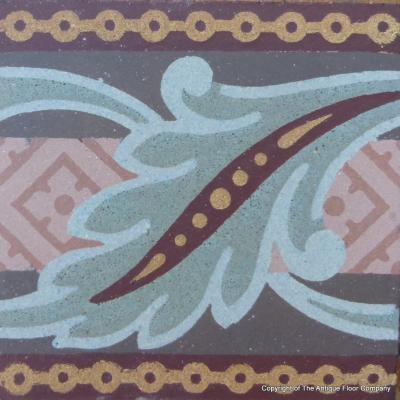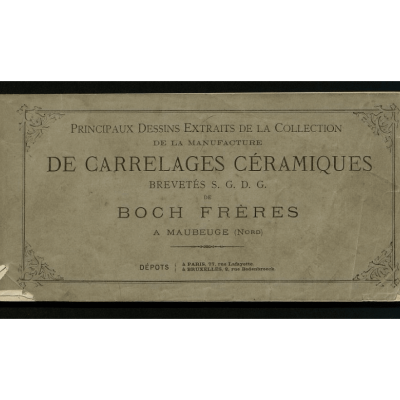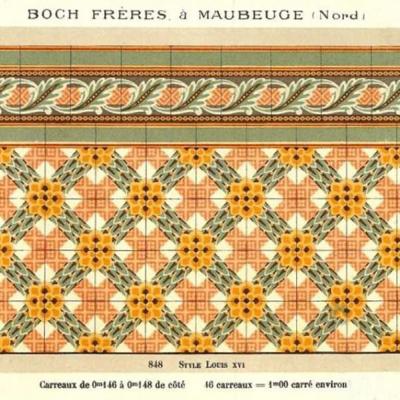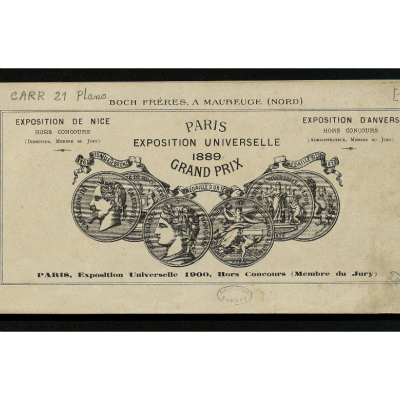7.4m2 - Impressive, complete Boch Freres floor c.1900-1910
An impressive quality French antique ceramic encaustic floor manufactured and stamped Boch Freres Maubeuge between 1900-1910
A scan from the original presentation of the floor from the period Boch Freres catalogue is included in the gallery where the design is know as Louis XVI. Louis XVI being the French king executed in 1793 after the French revolution of 1792. We do not know if the design of the floor has been influenced by tiles that may have been in one of Louis Palaces. The floor embraces an exquisitely designed field tile, framed by the triple border of a fluid vegetal themed large border and a plain bar half size border, top and tailing the large border.
The tiles are 15cm sq. and the floors surface totals c.7.4m2 / 79.6 sq ft.
Having cleaned well of its old mortar, to the reverse and sides, and years of wax on the tiles surface the photographs of a randomly selected 1m2 of the floor reveal a quality tile 15mm thick with a good slip. A small number of tiles display occasional edge nibbles or small chips and there are some with capillary cracks, small surface cracks that formed when these handmade tiles left the kiln and were cooling, a common characteristic of period handmade tiles. The floor offers a pleasing patina and will grout to display a beautiful floor good for another hundred years. Being highly fired the tile can be laid inside or outside of the home and no sealing of the floor is required once the floor is laid as a regular wash will be all that is required to retain its beauty.
Tile Quantities, give or take one or two:-
FIELD - 185 tiles - 4.2m2 / 45.2 sq ft
LARGE BORDER - 65 tiles plus 4 corners - 1.55m2 - 16.7 sq ft. or 10.4 linear metres / 33.9 linear ft.
SMALL BORDER - 145 tiles plus 8 corners - 1.66m2 - 18 sq ft. or 22.35 linear metres / 72 linear ft.
NOTE
Antique tiles were most commonly made in single or two tile moulds. Before current computer automation methods their moulds were made my hand and the colour slips mixed by eye. Kiln temperatures could also be variable, as could the firing time. The result is that often tiles display subtle size and thickness variations and there can be tonal variations in colours, owing to the slip mixing and/or firing time. All of this makes these handmade tiles unique and adds to their charm. Some floors display their subtle variations in size and tones, some not, but when photographing we always take a random section of the floor so that it is representative of the whole. A tiler should always dry lay a section of the tiles to familiarise himself with them before starting to fix lay.
MAD103



